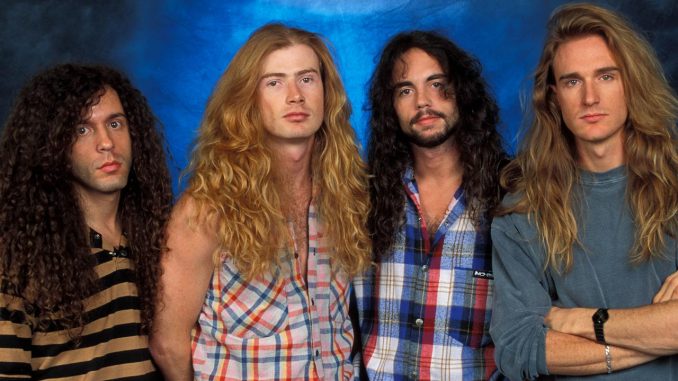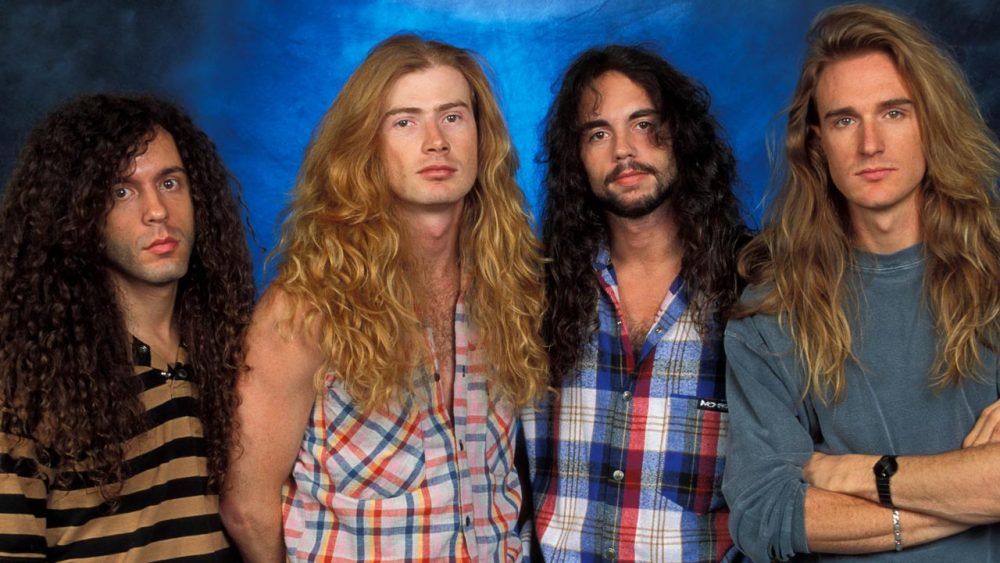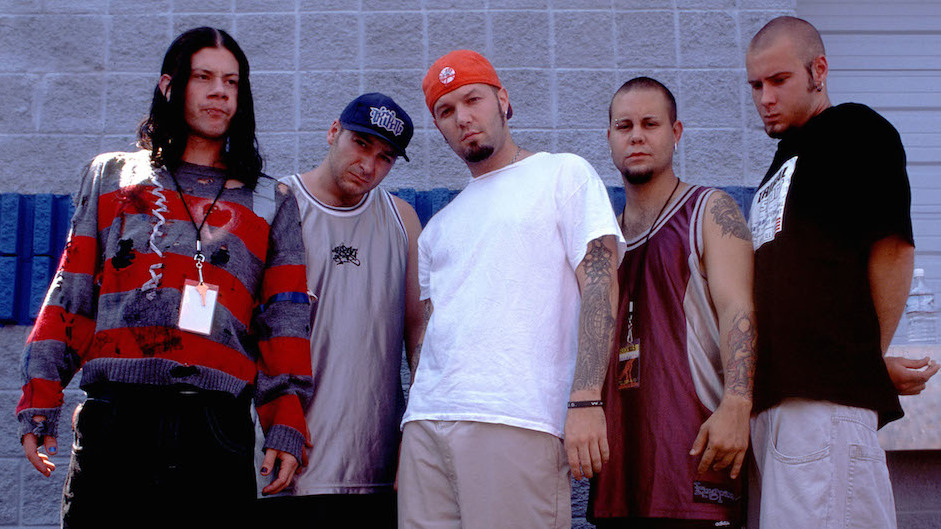
(Also check out our list “Why the 1990s Were a Great Decade for Heavy Metal”)
As the 1980s ended and the 1990s opened, heavy metal reached its golden age. 1990 alone saw the release of masterpieces like JUDAS PRIEST’s Painkiller, MEGADETH’s Rust in Peace, PANTERA’s Cowboys From Hell, and SLAYERs Seasons in the Abyss just to name a few*. However, change was on the horizon and as the ‘90s went on it came with the rise of Grunge, corporate pressure, and inner-community turmoil. These factors, along with others, combined to create a dismal decade that nearly killed the heavy metal community and subsequent genres. Here are some of the core moments from the 1990s that made it a terrible decade for heavy metal.
*These albums also came out in 1990: ANNIHILATOR – Never, Neverland, ANTHRAX – Persistence of Time, DEATH – Spiritual Healing, DEATH ANGEL – Act III, FORBIDDEN – Twisted Into Form, KING DIAMOND – The Eye, KREATOR – Coma of Souls, QUEENSRYCHE – Empire, TROUBLE – Trouble
Gone Too Soon

Every decade has its share of deaths in the metal community. On top of that, the ‘90s saw a rash of premature deaths in heavy metal. Eric Carr (KISS) and Freddie Mercury (QUEEN) both passed away on November 24th, 1991. Criss Oliva, lead guitarist for SAVATAGE was only 30 when he passed away in a traffic accident in 1993. Carl Albert, singer for VICIOUS RUMORS was poised to be on the list of all-time great metal vocalists. Unfortunately, he also passed away in a traffic accident, in 1995, at the age of 32. These are just a few of the 100+ deaths the rock/metal community witnessed in the 90s (and doesn’t even include deaths like Kurt Cobain).
Breaking up the Classic Line-ups

The changing tides of the 1990s brought turmoil within bands. Whether it was disagreements on the music direction, band-mate disputes, or the feeling that a band had done all it could (in the case of Bruce Dickinson and IRON MAIDEN). This turmoil caused the break-up of some of the most classic band line-ups in music history. Bruce Dickinson and Adrian Smith left IRON MAIDEN in the early ‘90s, and DEATH ANGEL disbanded all-together in 1991. 1992 was a particularly tumultuous year. In that year, Rob Halford left JUDAS PRIEST, TESTAMENT lost lead guitarist Alex Skolnick due to creative differences, drummer Dave Lombardo quit SLAYER, and ANTHRAX fired singer Joey Belladonna. Many of the bands that laid the foundations of metal were breaking up or changing their looks and led to a loss of inspiration.
The Rise of Grunge and the MTV Influence

Grunge, an alternative rock genre and subculture, first emerged in Seattle the mid-1980s. The style become known as a hybrid of punk and metal. By the early 1990s its popularity had spread, with grunge bands popping up in California and other parts of the US. This subculture built a strong following and soon became the most popular rock genre at the time. The commercial success of releases such as NIRVANA’s Nevermind and ALICE IN CHAINS Dirt led to major record deals and record companies searching far and wide for undiscovered talent.
As grunge took over, metal fell out of fashion so-to-speak. MTV, who had a huge influence at the time, began showcasing more alt rock and grunge music in 1991 and by 1995, the tv station had canceled Headbanger’s Ball (it’s heavy metal music program) and vastly increased it’s rotation of weekly alternative music programs. The industry helped to dictate the musical taste of the general public.
Success Leads to… Corporate Pressure

Metal bands that were still on the major label rosters began receiving a lot of corporate pressure. Many labels had jumped on the metal bandwagon by the early ‘90s so a number of bands had signed with large companies. Unfortunately, labels quickly pivoted with the rise of grunge. Record labels began pressuring metal bands to make their music more mainstream, dress differently, and change their sound altogether. Even the biggest names were subject to corporate intrusion. MEGADETH were global metal superstars, but still the fat cats tried to tell Dave Mustaine and bandmates what to do (which included having them dress in flannel to more closely resemble the grunge style). Many bands changed their look and music in the 90s, as they got pressure from labels to move in a commercial direction so they could sell more.
Corporate Pressure Leads to… Bad Albums

The pressure metal bands received to be more commercial led to a decade of off brand, and sometimes flat out bad, albums from even the most well-established metal ensembles. There was a lot of flailing around from previously reliable bands as they to fit the popular mold. TESTAMENT’s The Ritual (1992) and OVERKILL’s I Hear Black (1993) were huge departures from their typical sounds, though not all-together bad. Other band’s attempts at a more mainstream sound led to career worst albums: BLACK SABBATH’s Forbidden (1995) METALLICA’s Load (1996), SLAYER’s Diabolus in Musica (1998), ANTHRAX’s Volume 8 – Threat is Real (1998), and MEGADETH’s Risk (1999) are just a few of the most notable. Kerry King, of SLAYER, has even said that it was his “darkest time as a musician”.
Bad Albums Lead to… Stagnation
The corporate pressure, attempts to be mainstream and the resulting bad albums led to a culture-wide identity crisis in metal. The rampant uncertainty caused loss of creativity and a period of stagnation. While some bands continued to flail, some abandoned their roots and others stopped producing music altogether. It became a downturn for all kinds of metal and there was not much to be excited about during the mid ‘90s as a metal fan. In fact, genres like Thrash, Death Metal, and other forms of ‘extreme’ metal seemed to be dead in the water. The well had seemingly dried up for these genres and they no longer appealed to either underground or mainstream audiences.
A New Generation of Bands is Almost Metal’s Final Nail

As the 1990s came to an end, and a metal renaissance was on the horizon, we saw the emergence of new metal genres and a renewed sense of creativity. A new generation of metal bands began to form, many inspired by the alternative and grunge bands of the mid-90s and their mix of genres. This led to the creation of new metal subgenres along with some of the most divisive bands in music history.
For many metal fans, it raised concerns that these new genres would lead to metal’s death knell. In some cases, these worries were simply a failure (or refusal) for traditional metal fans to fully embrace the new styles. On the other hand, band’s like LIMP BIZKIT, NICKELBACK, and CREED caused such a huge rift in the music community that they almost collapsed an entire culture. These bands retained large followings for a time but are widely hated and rank high on many all-time worst bands lists.
As a metal fan, it’s easy to look back at ’90’s with frustration and disdain. It’s certainly justified, especially when you talk about the nosedive in popularity, the lack of financial stability for most bands, and the subsequent stress and frustration. The turmoil and hardship of the decade nearly altered the genre for good (or killed it altogether). However, it also made one fact very clear: the heavy metal community is strong, resilient, and adaptable. The terrible ‘90s led to a boom in creativity and inspiration from genre founders as well as a new generation of bands. In hindsight, there was a lot of good that came from the 1990s and we have the decade to thank for shaping the metal community we have today (for better and for worse).

Leave a Reply